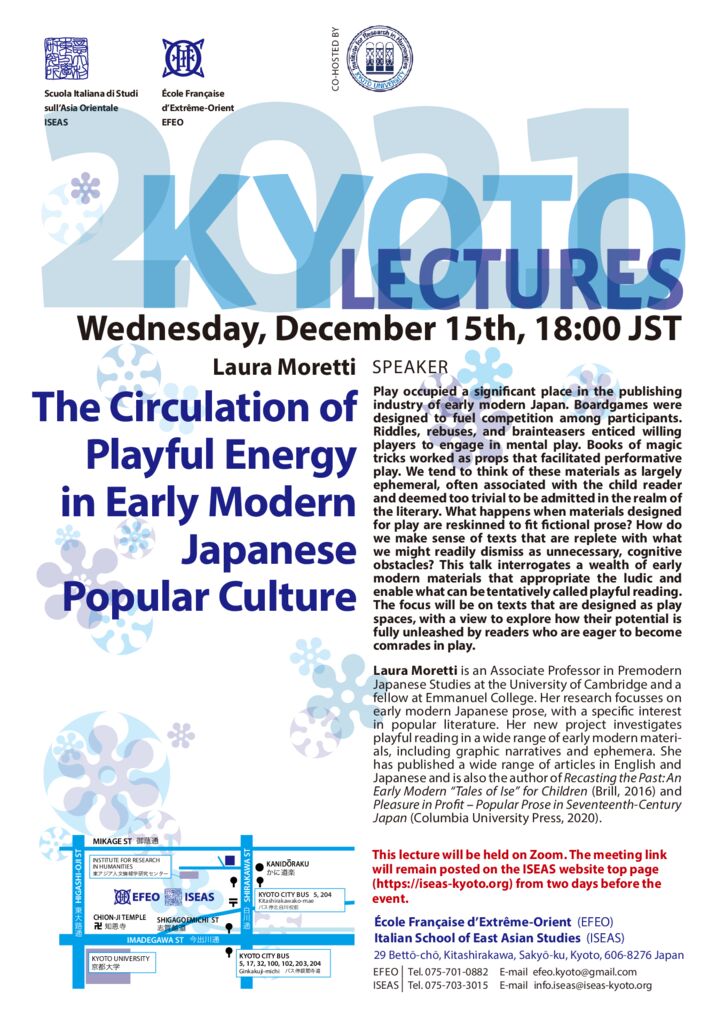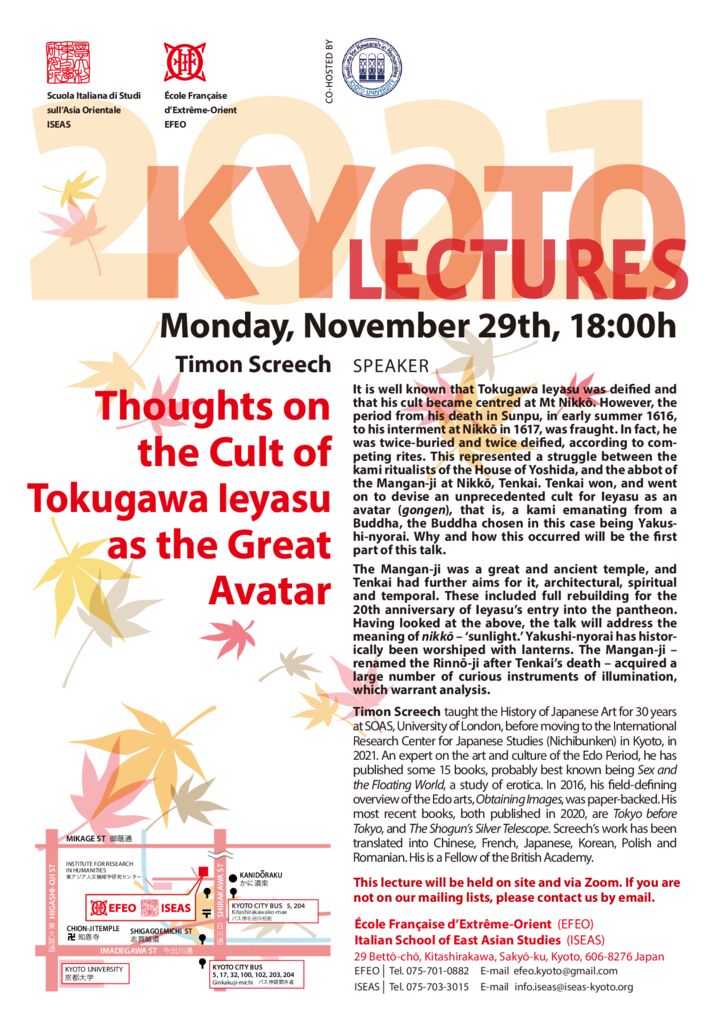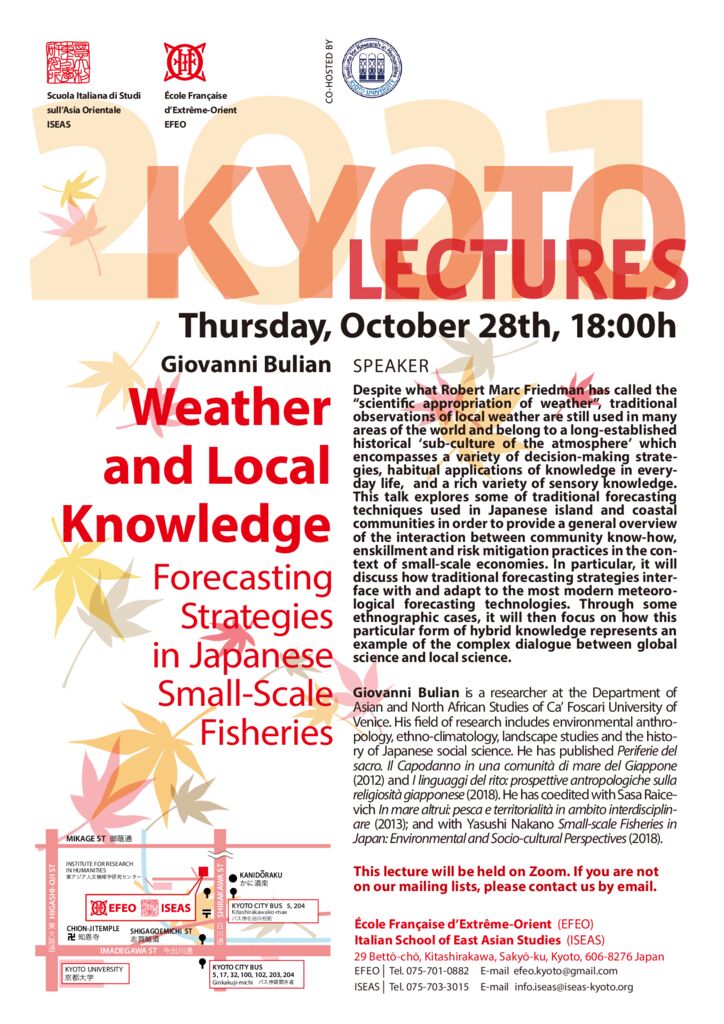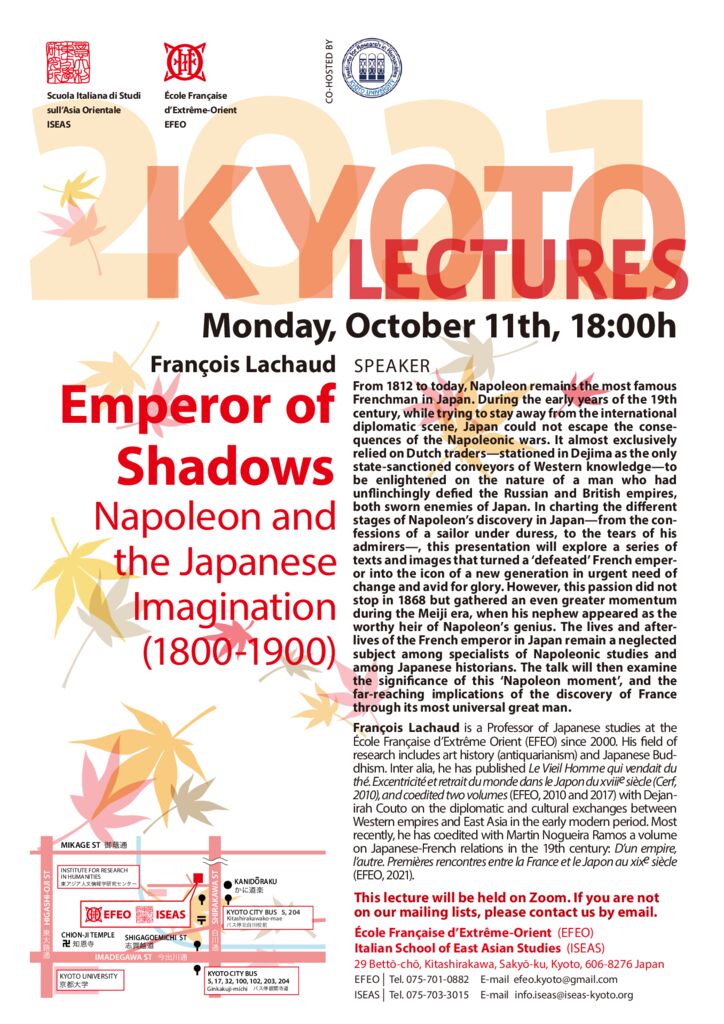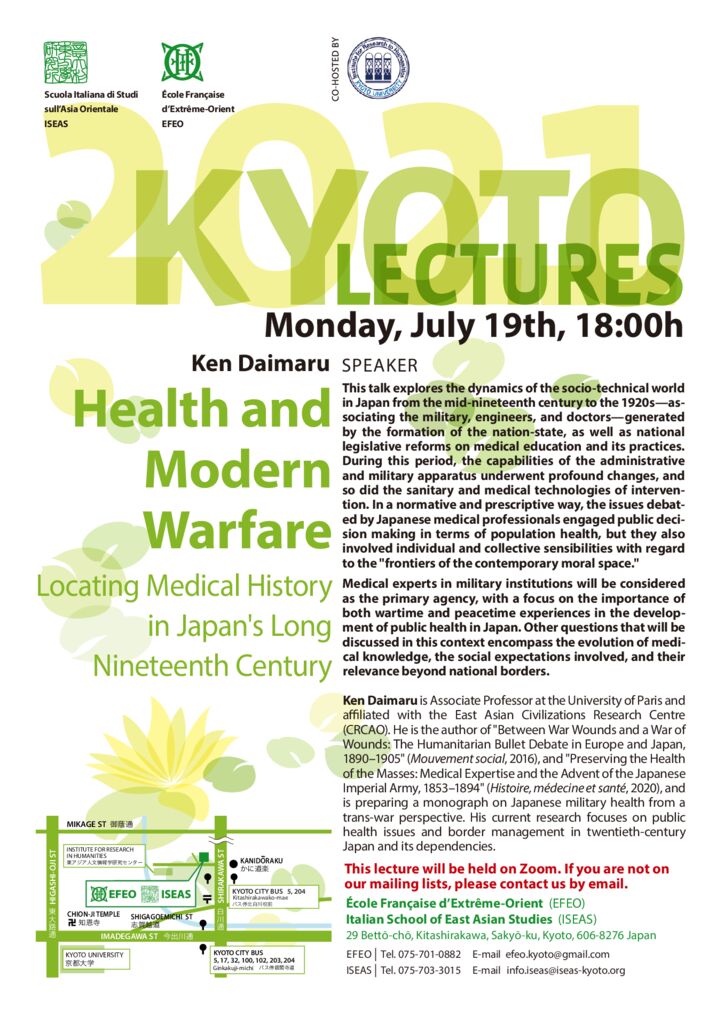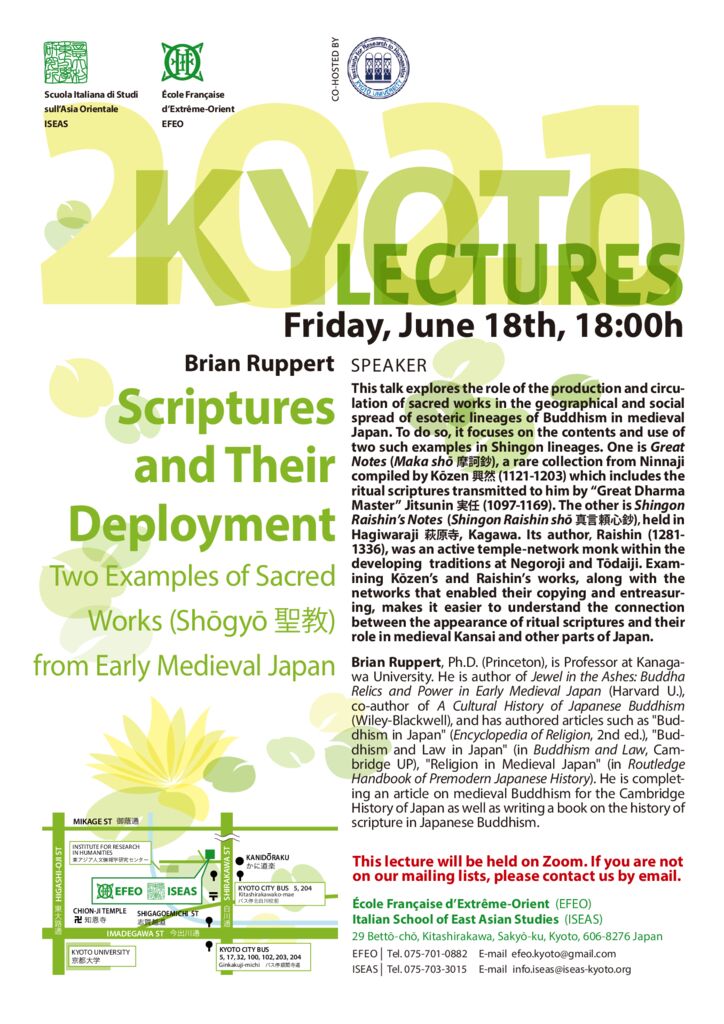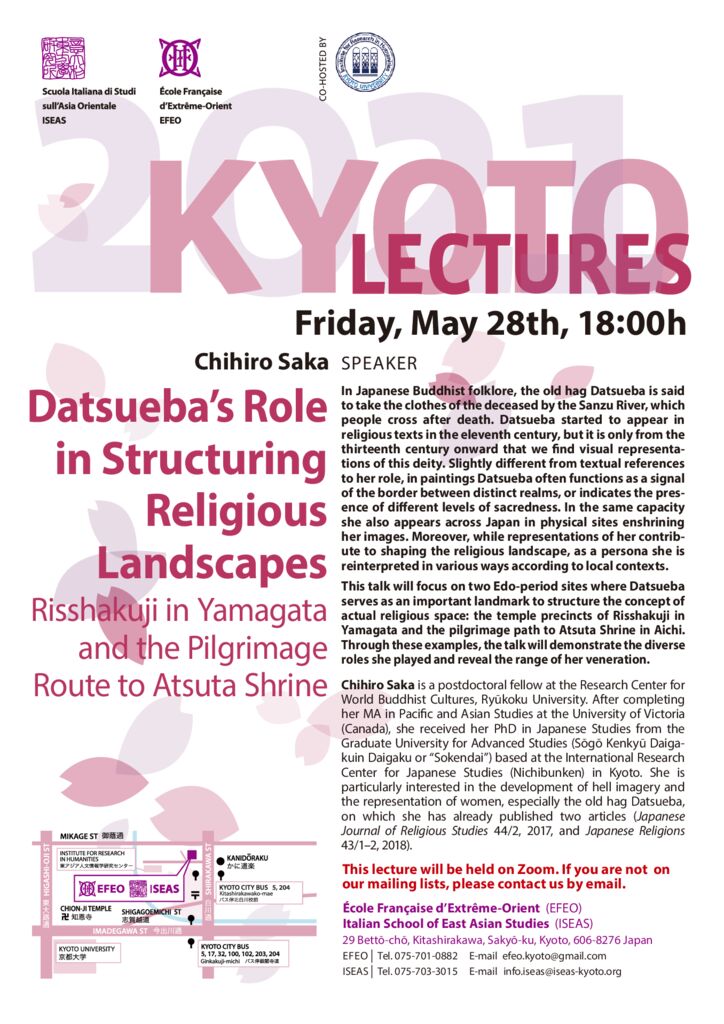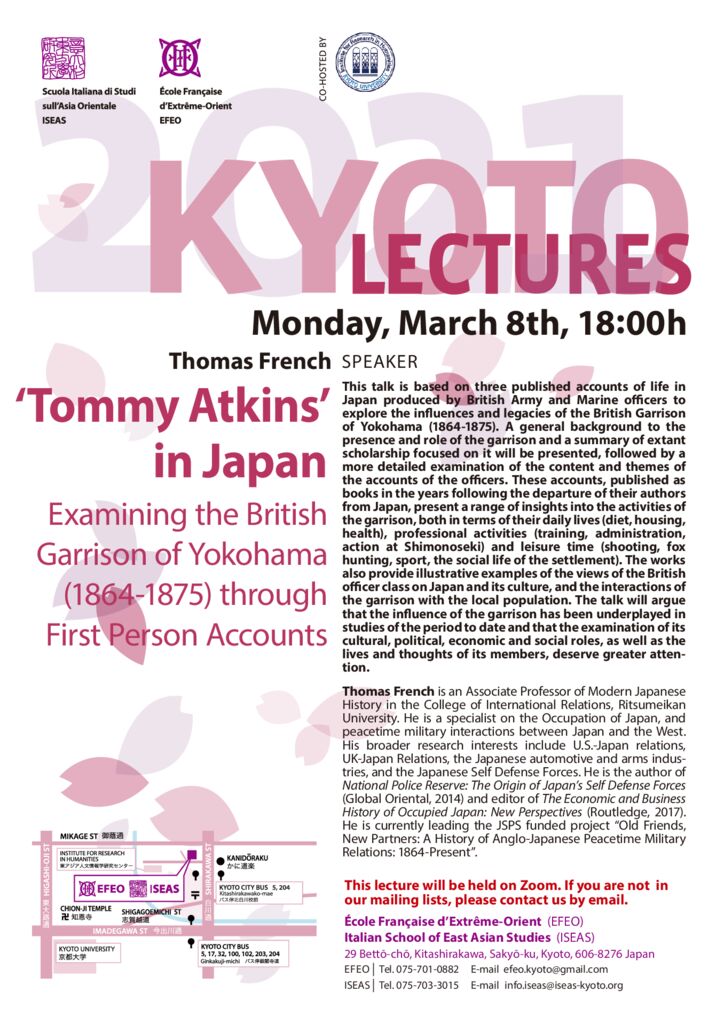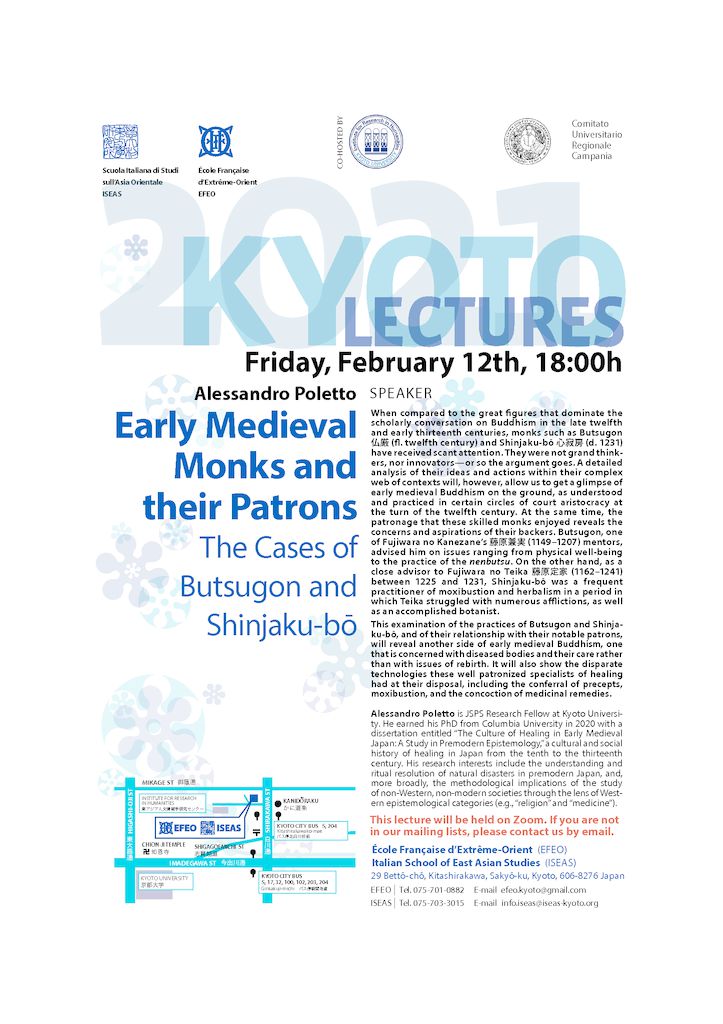Kyoto Lectures
The Circulation of Playful Energy in Early Modern Japanese Popular Culture
Laura Moretti
December 15th, 2021 18:00
This lecture will be available only on Zoom
Play occupied a significant place in the publishing industry of early modern Japan. Boardgames were designed to fuel competition among participants. Riddles, rebuses, and brainteasers enticed willing players to engage in mental play. Books of magic tricks worked as props that facilitated performative play. We tend to think of these materials as largely ephemeral, often associated with the child reader and deemed too trivial to be admitted in the realm of the literary. What happens when materials designed for play are reskinned to fit fictional prose? How do we make sense of texts that are replete with what we might readily dismiss as unnecessary, cognitive obstacles? This talk interrogates a wealth of early modern materials that appropriate the ludic and enable what can be tentatively called playful reading. The focus will be on texts that are designed as play spaces, with a view to explore how their potential is fully unleashed by readers who are eager to become comrades in play.
Laura Moretti is an Associate Professor in Premodern Japanese Studies at the University of Cambridge and a fellow at Emmanuel College. Her research focusses on early modern Japanese prose, with a specific interest in popular literature. Her new project investigates playful reading in a wide range of early modern materi-als, including graphic narratives and ephemera. She has published a wide range of articles in English and Japanese and is also the author of Recasting the Past: An Early Modern “Tales of Ise” for Children (Brill, 2016) and Pleasure in Profit – Popular Prose in Seventeenth-Century Japan (Columbia University Press, 2020).
The meeting link will remain posted on the ISEAS website top page from december 13.
Kyoto Lectures
Thoughts on the Cult of Tokugawa Ieyasu as the Great Avatar
Timon Screech
November 29th, 2021 18:00
This lecture will be held on site and via Zoom
It is well known that Tokugawa Ieyasu was deified and that his cult became centred at Mt Nikkō. However, the period from his death in Sunpu, in early summer 1616, to his interment at Nikkō in 1617, was fraught. In fact, he was twice-buried and twice deified, according to competing rites. This represented a struggle between the kami ritualists of the House of Yoshida, and the abbot of the Mangan-ji at Nikkō, Tenkai. Tenkai won, and went on to devise an unprecedented cult for Ieyasu as an avatar (gongen), that is, a kami emanating from a Buddha, the Buddha chosen in this case being Yakushi-nyorai. Why and how this occurred will be the first part of this talk.
The Mangan-ji was a great and ancient temple, and Tenkai had further aims for it, architectural, spiritual and temporal. These included full rebuilding for the 20th anniversary of Ieyasu’s entry into the pantheon. Having looked at the above, the talk will address the meaning of nikkō – ‘sunlight.’ Yakushi-nyorai has historically been worshiped with lanterns. The Mangan-ji – renamed the Rinnō-ji after Tenkai’s death – acquired a large number of curious instruments of illumination, which warrant analysis.
Timon Screech taught the History of Japanese Art for 30 years at SOAS, University of London, before moving to the International Research Center for Japanese Studies (Nichibunken) in Kyoto, in 2021. An expert on the art and culture of the Edo Period, he has published some 15 books, probably best known being Sex and the Floating World, a study of erotica. In 2016, his field-defining overview of the Edo arts, Obtaining Images, was paper-backed. His most recent books, both published in 2020, are Tokyo before Tokyo, and The Shogun’s Silver Telescope. Screech’s work has been translated into Chinese, French, Japanese, Korean, Polish and Romanian. His is a Fellow of the British Academy.
This lecture will be available on Zoom. A limited audience (maximum twenty persons, with precedence to researchers and advanced students) will be allowed at our centre. For this, please contact us by e-mail. ()
Kyoto Lectures
Weather and Local Knowledge
Forecasting Strategies in Japanese Small-Scale Fisheries
Giovanni Bulian
October 28th, 2021 18:00
This lecture will be available only on Zoom
Despite what Robert Marc Friedman has called the “scientific appropriation of weather”, traditional observations of local weather are still used in many areas of the world and belong to a long-established historical ‘sub-culture of the atmosphere’ which encompasses a variety of decision-making strategies, habitual applications of knowledge in everyday life, and a rich variety of sensory knowledge. This talk explores some of traditional forecasting techniques used in Japanese island and coastal communities in order to provide a general overview of the interaction between community know-how, enskillment and risk mitigation practices in the context of small-scale economies. In particular, it will discuss how traditional forecasting strategies interface with and adapt to the most modern meteorological forecasting technologies. Through some ethnographic cases, it will then focus on how this particular form of hybrid knowledge represents an example of the complex dialogue between global science and local science.
Giovanni Bulian is a researcher at the Department of Asian and North African Studies of Ca’ Foscari University of Venice. His field of research includes environmental anthropology, ethno-climatology, landscape studies and the history of Japanese social science. He has published Periferie del sacro. Il Capodanno in una comunità di mare del Giappone (2012) and I linguaggi del rito: prospettive antropologiche sulla religiosità giapponese (2018). He has coedited with Sasa Raicevich In mare altrui: pesca e territorialità in ambito interdisciplinare (2013); and with Yasushi Nakano Small-scale Fisheries in Japan: Environmental and Socio-cultural Perspectives (2018).
Kyoto Lectures
Emperor of Shadows
Napoleon and the Japanese Imagination (1800-1900)
François Lachaud
October 11th, 2021 18:00
This lecture will be available only on Zoom
From 1812 to today, Napoleon remains the most famous Frenchman in Japan. During the early years of the 19th century, while trying to stay away from the international diplomatic scene, Japan could not escape the consequences of the Napoleonic wars. It almost exclusively relied on Dutch traders—stationed in Dejima as the only state-sanctioned conveyors of Western knowledge—to be enlightened on the nature of a man who had unflinchingly defied the Russian and British empires, both sworn enemies of Japan. In charting the different stages of Napoleon’s discovery in Japan—from the confessions of a sailor under duress, to the tears of his admirers—, this presentation will explore a series of texts and images that turned a ‘defeated’ French emperor into the icon of a new generation in urgent need of change and avid for glory. However, this passion did not stop in 1868 but gathered an even greater momentum during the Meiji era, when his nephew appeared as the worthy heir of Napoleon’s genius. The lives and afterlives of the French emperor in Japan remain a neglected subject among specialists of Napoleonic studies and among Japanese historians. The talk will then examine the significance of this ‘Napoleon moment’, and the far-reaching implications of the discovery of France through its most universal great man.
François Lachaud is a Professor of Japanese studies at the École Française d’Extrême-Orient (EFEO) since 2000. His field of research includes art history (antiquarianism) and Japanese Buddhism. Inter alia, he has published Le Vieil Homme qui vendait du thé. Excentricité et retrait du monde dans le Japon du xviiie siècle (Cerf, 2010), and coedited two volumes (EFEO, 2010 and 2017) with Dejanirah Couto on the diplomatic and cultural exchanges between Western empires and East Asia in the early modern period. Most recently, he has coedited with Martin Nogueira Ramos a volume on Japanese-French relations in the 19th century: D’un empire, l’autre. Premières rencontres entre la France et le Japon au xixe siècle (EFEO, 2021).
Kyoto Lectures
Health and Modern Warfare
Locating Medical History in Japan's Long Nineteenth Century
Ken Daimaru
July 19th, 2021 18:00
This lecture will be available only on Zoom
This talk explores the dynamics of the socio-technical world in Japan from the mid-nineteenth century to the 1920s—associating the military, engineers, and doctors—generated by the formation of the nation-state, as well as national legislative reforms on medical education and its practices. During this period, the capabilities of the administrative and military apparatus underwent profound changes, and so did the sanitary and medical technologies of intervention. In a normative and prescriptive way, the issues debated by Japanese medical professionals engaged public decision making in terms of population health, but they also involved individual and collective sensibilities with regard to the “frontiers of the contemporary moral space.”
Medical experts in military institutions will be considered as the primary agency, with a focus on the importance of both wartime and peacetime experiences in the development of public health in Japan. Other questions that will be discussed in this context encompass the evolution of medical knowledge, the social expectations involved, and their relevance beyond national borders.
Ken Daimaru is Associate Professor at the University of Paris and affiliated with the East Asian Civilizations Research Centre (CRCAO). He is the author of “Between War Wounds and a War of Wounds: The Humanitarian Bullet Debate in Europe and Japan, 1890–1905” (Mouvement social, 2016), and “Preserving the Health of the Masses: Medical Expertise and the Advent of the Japanese Imperial Army, 1853–1894” (Histoire, médecine et santé, 2020), and is preparing a monograph on Japanese military health from a trans-war perspective. His current research focuses on public health issues and border management in twentieth-century Japan and its dependencies.
Kyoto Lectures
Scriptures and Their Deployment
Two Examples of Sacred Works (Shōgyō 聖教) from Early Medieval Japan
Brian Ruppert
June 18th, 2021 18:00
This lecture will be available only on Zoom
This talk explores the role of the production and circulation of sacred works in the geographical and social spread of esoteric lineages of Buddhism in medieval Japan. To do so, it focuses on the contents and use of two such examples in Shingon lineages. One is Great Notes (Maka shō 摩訶鈔), a rare collection from Ninnaji compiled by Kōzen 興然 (1121-1203) which includes the ritual scriptures transmitted to him by “Great Dharma Master” Jitsunin 実任 (1097-1169). The other is Shingon Raishin’s Notes (Shingon Raishin shō 真言頼心鈔), held in Hagiwaraji 萩原寺, Kagawa. Its author, Raishin (1281-1336), was an active temple-network monk within the developing traditions at Negoroji and Tōdaiji. Examining Kōzen’s and Raishin’s works, along with the networks that enabled their copying and entreasuring, makes it easier to understand the connection between the appearance of ritual scriptures and their role in medieval Kansai and other parts of Japan.
Brian Ruppert, Ph.D. (Princeton), is Professor at Kanagawa University. He is author of Jewel in the Ashes: Buddha Relics and Power in Early Medieval Japan (Harvard U.), co-author of A Cultural History of Japanese Buddhism (Wiley-Blackwell), and has authored articles such as “Buddhism in Japan” (Encyclopedia of Religion, 2nd ed.), “Buddhism and Law in Japan” (in Buddhism and Law, Cambridge UP), “Religion in Medieval Japan” (in Routledge Handbook of Premodern Japanese History). He is completing an article on medieval Buddhism for the Cambridge History of Japan as well as writing a book on the history of scripture in Japanese Buddhism.
Kyoto Lectures
Datsueba’s Role in Structuring Religious Landscapes
Risshakuji in Yamagata and the Pilgrimage Route to Atsuta Shrine
Chihiro Saka
May 28th, 2021 18:00
This lecture will be available only on Zoom
In Japanese Buddhist folklore, the old hag Datsueba is said to take the clothes of the deceased by the Sanzu River, which people cross after death. Datsueba started to appear in religious texts in the eleventh century, but it is only from the thirteenth century onward that we find visual representations of this deity. Slightly different from textual references to her role, in paintings Datsueba often functions as a signal of the border between distinct realms, or indicates the presence of different levels of sacredness. In the same capacity she also appears across Japan in physical sites enshrining her images. Moreover, while representations of her contribute to shaping the religious landscape, as a persona she is reinterpreted in various ways according to local contexts.
This talk will focus on two Edo-period sites where Datsueba serves as an important landmark to structure the concept of actual religious space: the temple precincts of Risshakuji in Yamagata and the pilgrimage path to Atsuta Shrine in Aichi. Through these examples, the talk will demonstrate the diverse roles she played and reveal the range of her veneration.
Chihiro Saka is a postdoctoral fellow at the Research Center for World Buddhist Cultures, Ryukoku University. After completing her MA in Pacific and Asian Studies at the University of Victoria (Canada), she received her PhD in Japanese Studies from the Graduate University for Advanced Studies (Sogo Kenkyu Daigakuin Daigaku or “Sokendai”) based at the International Research Center for Japanese Studies (Nichibunken) in Kyoto. She is particularly interested in the development of hell imagery and the representation of women, especially the old hag Datsueba, on which she has already published two articles (Japanese Journal of Religious Studies 44/2, 2017, and Japanese Religions 43/1–2, 2018).
Kyoto Lectures
Studying Women and Networks in the Late Tokugawa Period
The Case of the Rai Family
Bettina Gramlich-Oka
April 23rd, 2021 18:00
This lecture will be available only on Zoom
The aim of the talk is twofold: to introduce the Japan Biographical Database, its origin, aim, and current status, and to discuss ongoing research on what networks meant for the people involved, how they were used, why they were necessary, and how women functioned within them. The Japan Biographical Database is a web-based resource intended to provide biographical information on Japanese historical figures and their personal, social, and political networks. Starting in 2012 with research on Rai Shunsui (1746–1816), a scholar of the Hiroshima domain school, and steadily growing, it currently encompasses entries on about 9,400 individuals and 7,500 events pertaining to these individuals and their interactions. Its architecture is built upon the Harvard University China Biographical Database (Harvard University et al., 2018) with a modified web application. The database is a tool intended for researchers and students alike, allowing to search all entries by date, social status, and other filters as well as visualize networks of interest in a dedicated component. While addressing the case study of the Rai family of Hiroshima, the talk will touch on the recent publication of Women and Networks in Nineteenth Century Japan (University of Michigan Press, 2020).
Bettina Gramlich-Oka is Professor of Japanese History at the Faculty of Liberal Arts, Sophia University. Some of her publications include Thinking Like a Man: Tadano Makuzu (Brill, 2006) and the coedited volume Economic Thought in Early Modern Japan (Brill, 2010). In the past years, her research has centered on the exploration of networks of the Rai family from Hiroshima during the Tokugawa period. The development of the Japan Biographical Database (https://jbdb.jp/) is part of this endeavor, as well as the coedited volume with Anne Walthall, Miyazaki Fumiko, Sugano Noriko, Women and Networks in Nineteenth Century Japan (University of Michigan Press, 2020). Gramlich-Oka is currently the chief editor of Monumenta Nipponica.
Kyoto Lectures
‘Tommy Atkins’ in Japan
Examining the British Garrison of Yokohama (1864-1875) through First Person Accounts
Thomas French
March 8th, 2021 18:00
This lecture will be available only on Zoom
This talk is based on three published accounts of life in Japan produced by British Army and Marine officers to explore the influences and legacies of the British Garrison of Yokohama (1864-1875). A general background to the presence and role of the garrison and a summary of extant scholarship focused on it will be presented, followed by a more detailed examination of the content and themes of the accounts of the officers. These accounts, published as books in the years following the departure of their authors from Japan, present a range of insights into the activities of the garrison, both in terms of their daily lives (diet, housing, health), professional activities (training, administration, action at Shimonoseki) and leisure time (shooting, fox hunting, sport, the social life of the settlement). The works also provide illustrative examples of the views of the British officer class on Japan and its culture, and the interactions of the garrison with the local population. The talk will argue that the influence of the garrison has been underplayed in studies of the period to date and that the examination of its cultural, political, economic and social roles, as well as the lives and thoughts of its members, deserve greater attention.
Thomas French is an Associate Professor of Modern Japanese History in the College of International Relations, Ritsumeikan University. He is a specialist on the Occupation of Japan, and peacetime military interactions between Japan and the West. His broader research interests include U.S.-Japan relations, UK-Japan Relations, the Japanese automotive and arms industries, and the Japanese Self Defense Forces. He is the author of National Police Reserve: The Origin of Japan’s Self Defense Forces (Global Oriental, 2014) and editor of The Economic and Business History of Occupied Japan: New Perspectives (Routledge, 2017). He is currently leading the JSPS funded project “Old Friends, New Partners: A History of Anglo-Japanese Peacetime Military Relations: 1864-Present”.
Kyoto Lectures
Early Medieval Monks and their Patrons
The Cases of Butsugon and Shinjaku-bo
Alessandro Poletto
February 12th, 2021 18:00
This lecture will be available only on Zoom
When compared to the great gures that dominate the scholarly conversation on Buddhism in the late twelfth and early thirteenth centuries, monks such as Butsugon 仏厳 (. twelfth century) and Shinjaku-bo 心寂房 (d. 1231) have received scant attention. They were not grand thinkers, nor innovators—or so the argument goes. A detailed analysis of their ideas and actions within their complex web of contexts will, however, allow us to get a glimpse of early medieval Buddhism on the ground, as understood and practiced in certain circles of court aristocracy at the turn of the twelfth century. At the same time, the patronage that these skilled monks enjoyed reveals the concerns and aspirations of their backers. Butsugon, one of Fujiwara no Kanezane’s 藤原兼実 (1149–1207) mentors, advised him on issues ranging from physical well-being to the practice of the nenbutsu. On the other hand, as a close advisor to Fujiwara no Teika 藤原定家 (1162–1241) between 1225 and 1231, Shinjaku-bo was a frequent practitioner of moxibustion and herbalism in a period in which Teika struggled with numerous aictions, as wellas an accomplished botanist.
This examination of the practices of Butsugon and Shinjaku-bo, and of their relationship with their notable patrons, will reveal another side of early medieval Buddhism, one that is concerned with diseased bodies and their care rather than with issues of rebirth. It will also show the disparate technologies these well patronized specialists of healing had at their disposal, including the conferral of precepts, moxibustion, and the concoction of medicinal remedies.
Alessandro Poletto is JSPS Research Fellow at Kyoto University. He earned his PhD from Columbia University in 2020 with a dissertation entitled “The Culture of Healing in Early Medieval Japan: A Study in Premodern Epistemology,” a cultural and social history of healing in Japan from the tenth to the thirteenth century. His research interests include the understanding and ritual resolution of natural disasters in premodern Japan, and, more broadly, the methodological implications of the study of non-Western, non-modern societies through the lens of Western epistemological categories (e.g., “religion” and “medicine”).
